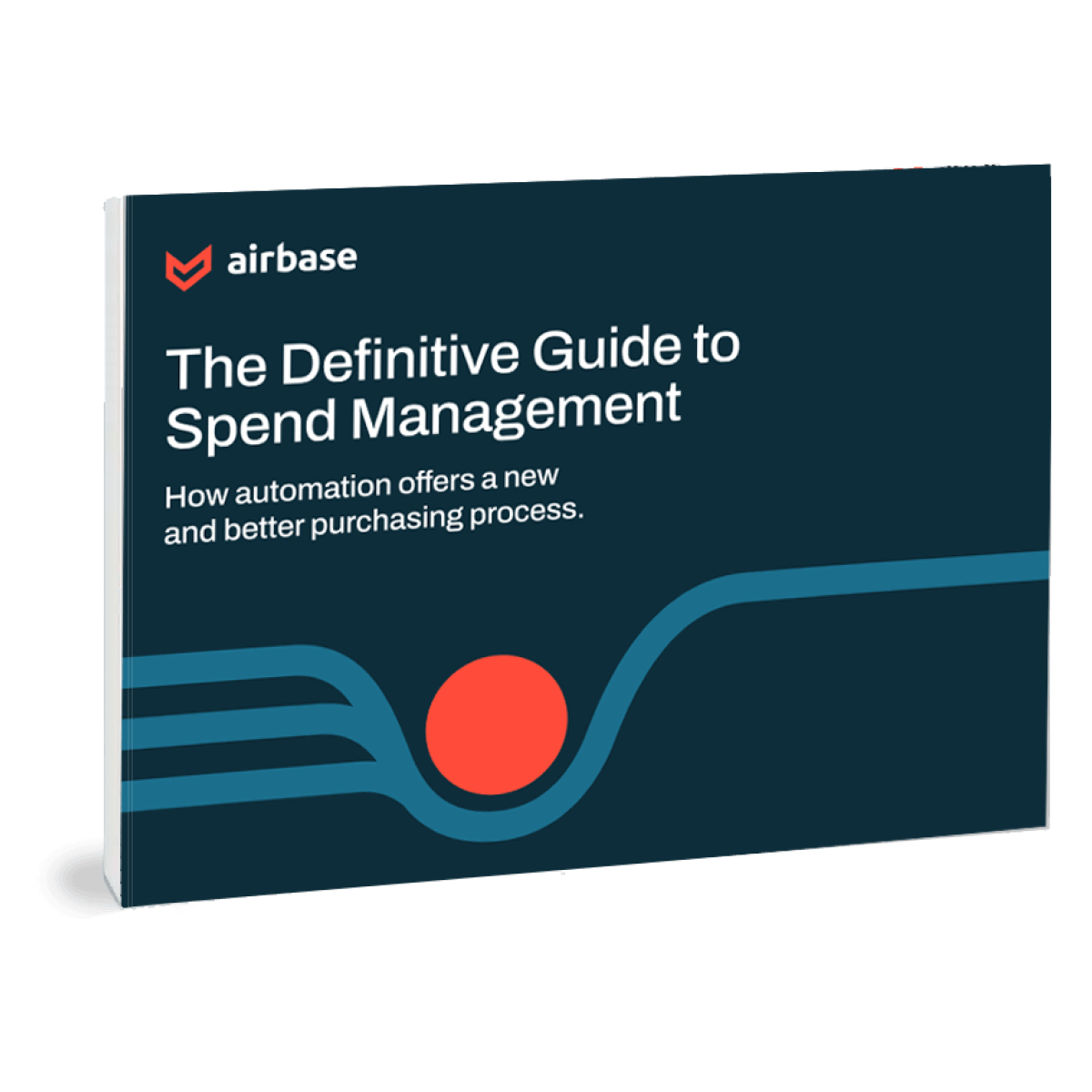As more businesses prioritize agility, deeply integrated systems, and remote work environments, one of the key players in the enterprise software league — spend management — is becoming more important than ever to boost financial efficiency and protect profitability.
How do you manage all company and supplier purchases?
How do you track every dollar leaving the company?
And how do you know if that dollar will make more dollars or if it vanished without driving efficiency?
You implement spend management software to:
- Manage purchase orders.
- Track employee expenses.
- Log vendor data.
- Manage risk.
- Ensure compliance.
- Minimize supply chain disruptions.
- Control the procurement process (and guide procurement teams).
- Automate workflows.
- Analyze employee spending patterns (spend analysis).
- Realize cost savings.
Bottom line: With a spend management system, you gain valuable insights into cash flow — it’s empowering to consolidate financial silos, identify opportunities that disjointed legacy systems missed, and gain complete visibility of spending activities.
This approach simplifies financial operations and improves cost control, efficiency, and compliance.
By bringing all financial processes into a single enterprise spend management platform, companies see their true spending (data visualization) and have complete control over their financial health.
This makes it easier to:
- Manage budgets.
- Maximize savings.
- Make strategic decisions that lead to growth, higher profits, and financial stability.
TL;DR: Enterprise spend management modernizes financial processes by integrating many tools into one platform. Real-time insights on spending (cost optimization), transparent workflows, and automated adjustments means better decisions around budget, forecasting, supply chain risk, vendor terms, and compliance. Optimization from procurement to reconciliation frees finance teams to focus on more strategic tasks that grow the enterprise.
“With year-on-year growth frequently exceeding 10 percent, the enterprise software market is the fastest growing segment in the overarching IT industry. Enterprise software [responds] to the needs of organizations, often specifically addressing the efficiency of their core business processes.” — Statista March 2024
This steep climb (into the $billions) is a global corporate nod recognizing the importance of installing software that keeps pace with growth.

What is enterprise spend management?
An enterprise spend management strategy uses cloud-based technologies to oversee, regulate, and optimize a company’s spending.
It integrates financial management tools into a single platform, automating manual processes, saving time, and managing spend.
Enterprise spend management is especially useful for companies with multiple distributed or remote operations or departments making spending decisions. By uniting financial operations under one spend management software solution, business expenses are monitored and controlled in real time. Financial accuracy is improved, and expense reports encourage responsible spending.
The most valuable benefit of enterprise spend management software is that it brings together previously siloed spending data from across the company, creating a complete view of all spending to keep cash flow positive.
Enterprise spend management concepts.
Sourcing and procurement.
To purchase a good or a service for company use, you must first find it (sourcing), and then go about getting it (procurement). Sourcing is the process of searching outside of the company for something the company needs.
Procurement is the process of negotiating contracts and getting the best price to bring what was sourced into the company.
Once you find and purchase a good, it’s important to evaluate whether the sourcing and procurement process was as optimized as possible. That’s where the concept of spend analysis comes into play.
Spend analysis.
Where are you spending the most? Group purchases by category (spend classification) starting with direct spend (raw materials that go into production) and indirect spend (peripheral to production), then subcategorize and clean the data (to standardize the format and reduce errors).
Do any spending patterns stand out?
7 key components of an enterprise spend management platform.
Spending money to purchase a spend platform that controls spending — the irony — reduces costs in the short term and controls wasteful future spending to create a noticeable return on investment.
A strong financial strategy that builds in real-time visibility puts power in the hands of finance teams to manage their resources more effectively and remain competitive in their markets.
The most valuable benefit of enterprise spend management software is that it keeps cash flow positive by centralizing previously siloed data from across the company, creating a complete view of all spending.


Take a tour of Airbase.
Explore Airbase with a self-guided tour.
Using these cost insights, leaders make better data-informed decisions, manage company budgets effectively, and plan for future expenses with greater accuracy.
Let’s step through each benefit:
1. Financial control and cost optimization.
Spend management tools significantly improve cost-cutting directives. These tools provide detailed analytics that uncover spending patterns, helping managers spot inefficiencies and unnecessary spending.
Proactive cost management looks at past spending data to negotiate better payment terms with suppliers and vendors, leading to big cost savings and better profit margins.
2. Budget control — improve profit margins.
Effective budget control keeps a company financially healthy. And what better way to control your budget than to use software that opens up cost visibility?
Set detailed budget limits, then track spending as it happens against these limits to reduce costs. Identify cost-saving opportunities to prevent overspending and ensure each department stays within its financial limits.
With the ability to continuously watch budget performance, enterprises quickly adjust to financial changes. Quick adjustment means staying on track to meet financial goals and protecting profit margins.
3. Forecasting and planning.
Better forecasting and planning are direct benefits of expense management solutions. These tools use advanced data analytics to provide accurate and timely financial insights, which are essential for effective enterprise spend management.
By understanding financial trends and the impact of current cloud spending on future finances, companies can better prepare for upcoming cloud expenses and investments in cloud services. This foresight helps maintain a steady resource flow and supports ongoing business growth.
4. Identify cost-saving opportunities (visibility & transparency).
Expense management increases visibility and transparency across all of a company’s financial transactions. This visibility is crucial for spotting unauthorized cloud costs and ensuring that every financial transaction is justified and aligns with company goals.
It also supports financial audits by providing easy access to detailed spending records, reducing the risk of compliance issues. Greater transparency helps keep financial records clean and builds trust among stakeholders.
5. Governance and compliance.
Governance and compliance are key parts of financial management that an enterprise spending platform greatly strengthens. These systems make sure all financial procedures and policies are strictly followed.
They automate compliance checks and keep detailed logs of all transactions, which are invaluable for meeting regulatory needs and passing external audits. By automating governance, companies reduce the risk of human error and improve their adherence to financial regulations regarding cloud resources.
6. Vendor management: Mitigate supply chain risks.
How much does your company spend on vendor contracts?
An enterprise-level spend platform provides vendor management tools for contract management, selecting vendors, tracking supplier performance, inventory management, and keeping supplier expenses within set limits.
Effective supply chain communication and collaboration lead to better relationships, which mitigates supply chain risks (like quality, delivery, and non-compliance)
7. Improved decision-making.
Customizable reports give a visual view of spending data, helping managers understand where to cut costs, mitigate risks, and drive sustainable growth. The entire process is tracked so managers can see the financial implications of their decisions and make necessary adjustments.
This quick response is crucial in fast-moving business environments where financial agility creates a competitive edge.

The Definitive Guide to Spend Management
See how automation offers a better purchasing process.
Case study: Platform Science’s transformation through enterprise spend management.
Platform Science, a leader in transportation technology, faced big challenges with its previous spend management solutions, which were scattered and inefficient. By switching to Airbase’s complete spend management platform, Platform Science was able to consolidate all of its non-payroll spending, leading to better visibility, control, and operational efficiency.
The result?
Smoother procurement processes, real-time budget monitoring, and better adherence to spending policies. Airbase allowed Platform Science to automate its entire financial process, from procurement to payment, reducing manual work and minimizing errors.
This case study shows the importance of choosing a spend management solution that fits a company’s specific needs and can adapt to its unique operational challenges. For Platform Science, Airbase became a crucial tool, not only in managing day-to-day financial operations, but also in driving strategic business decisions that strengthened their market position.
How to choose and implement the right enterprise spend tool.
Choosing the right tool depends on your company’s spend culture, specific operational needs, and financial goals:
Assess current spend culture (needs and goals).
Start by thoroughly reviewing your current financial management processes and cost allocation to identify areas that need improvement.
Consider factors such as the:
- Size of your organization.
- Complexity of your financial transactions.
- Level of automation required.
Evaluate how different departments interact with financial processes and identify any unique requirements they might have.
Evaluate features and capabilities.
Looking at your current spend data, do you already have:
- Real-time budget tracking?
- Detailed expense reporting?
- Seamless integration with existing financial systems?
If you already have a spend management tool, will it grow with your company? Will it continue to satisfy policy compliance and improve supplier collaboration?
Consider tools that are customizable to the specific workflows and approval hierarchies of your business. Choose a solution that turns raw data into actionable insights and monitors those actions with comprehensive spend analysis and reports.
Develop an implementation plan.
Evaluating the benefit of an ESM platform is the first very important step. The next step is to consider how the new system will integrate into your company’s current workflow.
The ability of a spend management tool to integrate seamlessly with your existing IT infrastructure is critical. Make sure it works well with your enterprise resource planning (ERP) systems, human resources information systems (HRIS), and other important operational tools.
Effective integration knocks down data silos and improves information flow across platforms, leading to more accurate and timely financial reporting.
It is also important to consider how easy it is to plug your enterprise platform into business operations and whether the provider offers support during the integration process. A tool that integrates easily with minimal disruption is preferable, as it reduces downtime and speeds up adoption across the organization.
Look at the cost and pricing structure.
Conduct a spend analysis to understand the pricing model of the tool.
Does it offer:
- Flat fee?
- Pay-per-use?
- Or tiered pricing based on the number of users or transactions?
Compare the cost against the features you like and the benefits you’ll enjoy, and consider the potential return on investment (ROI) realized thanks to better financial management, performance monitoring, and cost savings.
What are the long-term costs of the tool?
Are there potential fees for updates, support, or additional modules?
A spend analysis answers these questions, allowing you to choose a cost-effective solution that meets all the criteria for your spend management process.
Review security and compliance measures.
Security and compliance are essential to make sure the tool follows industry-standard security protocols and compliance regulations relevant to your business. Look for features like data encryption, regular security audits, and adherence to standards such as GDPR or SOC 2 to protect your financial data from unauthorized access and security breaches.
Additionally, consider the provider’s reputation and the robustness of their security measures. A provider that is transparent about their security practices and has a proven track record of safeguarding client data is preferable.
Seek user feedback and reviews.
Finally, consult current users of the spend management tools you are considering for your enterprise. User reviews and feedback can offer insights into the software’s reliability, ease of use, and quality of customer support. Pay attention to comments about the tool’s performance in real-world scenarios that are similar to your business environment.
Gathering feedback from multiple sources, including independent review platforms, can provide a balanced view of the tool’s strengths and weaknesses. It’s also useful to ask for case studies or references to better understand how the tool has benefited similar businesses in your industry.
By taking these detailed steps, you can ensure that you select a cloud cost management tool that not only meets your current needs but is also a sustainable and beneficial investment for the future of your business.
Curbing maverick spending and tightening financial performance in a centralized platform sets a foundation for success. By selecting a spend-tracking tool that aligns with your company’s operations, you unlock better decision-making across the organization wherever it comes to managing dollars. The Airbase platform integrates seamlessly with most major ERP systems — without disrupting existing workflows.
The impact of efficient spend management on enterprise success.
Money coming in must be more than money going out for an enterprise to grow.
So it stands to reason that curbing maverick spending and tightening financial performance in a centralized platform sets a foundation for success.
Implementing the right enterprise spend management solution transforms how businesses oversee and optimize spending. By selecting a spend-tracking tool that aligns with your company’s operations, you unlock better decision-making across the organization whenever it comes to managing dollars.
This is an investment that promotes long-term business growth and sustainability by spending with more transparency, financial discipline, and insight.
Airbase understands how businesses handle their financial operations. Our comprehensive spend management solution is designed to be a concierge for finance leaders and their teams. With tools that cover the entire spectrum of spend management from procurement to reconciliation, the Airbase platform integrates seamlessly with most major ERP systems — without disrupting existing workflows.
For a Vice President of Finance, Airbase pulls back the curtain on company spending, budgeting, and forecasting. Since the platform updates in real time, quick adjustments protect financial goals.
Beyond typical spend management, Airbase automates approval workflows, real-time expense reporting, and general ledger integration to significantly reduce time spent on month-end closures and financial reconciliations.
The finance department works above manual tasks, focusing on more strategic ones, ultimately contributing to the overall growth and efficiency of the company.
Businesses that adopt Airbase are streamlined, efficient, and compliant; they are modernized to achieve a new level of success in their financial operations.
FAQ.
What is enterprise spend?
Large companies have large expenses, making managing all supplier and company purchases essential to identify and optimize every dollar spent.
What is “enterprise spend management” and why is it important for businesses?
Spend management monitors and controls expenditure. It looks at procurement, cost, and accounts payable. It focuses on cost efficiency, reduces overspending, drives strategic sourcing decisions, and ultimately improves the business’s bottom line.
What are some key features to look for in an enterprise spend management tool?
- Real-time visibility into spending.
- Robust data analytics for insights into spending trends.
- Seamless integration with existing financial systems.
- Compliance tracking.
- Efficient invoice management.
- Budgeting tools.
 Jira Integration – Streamline Your Workflows
Jira Integration – Streamline Your Workflows  Ironclad Integration – Simplify Legal Operations
Ironclad Integration – Simplify Legal Operations  Asana
Asana 





